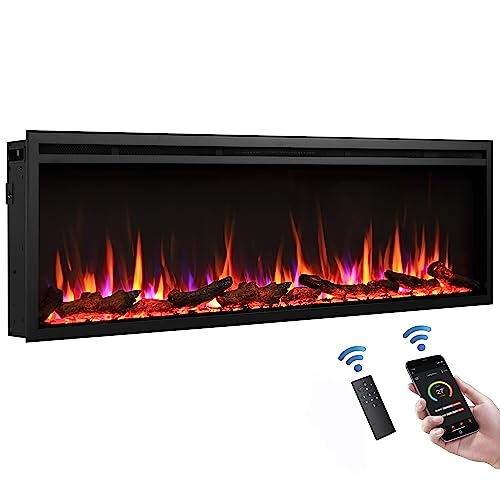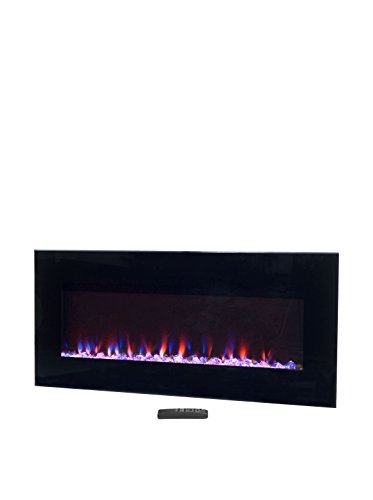15 Top Wood Burner Fireplace Bloggers You Need To Follow
페이지 정보

본문
 How to Get the Most From a Wood Burner Fireplace
How to Get the Most From a Wood Burner FireplaceUnlike traditional open Wooden fireplaces wood stoves are specifically designed and optimized to burn wood. This allows them to meet stricter emission standards.
 Wood burning stoves are renowned for their glowing yellow flames, cozy crackling sounds, and that primordial sensation of warmth. The smoke that is generated contains toxic air pollutants like formaldehyde and benzene as well as polycyclic aromatic hydrocarbons.
Wood burning stoves are renowned for their glowing yellow flames, cozy crackling sounds, and that primordial sensation of warmth. The smoke that is generated contains toxic air pollutants like formaldehyde and benzene as well as polycyclic aromatic hydrocarbons.Efficient
Fireplaces and stoves that burn wood offer a stunning and natural heat source to the home, and they are extremely efficient. A top-quality wood burner could be eco-friendly up to 77%. With the increasing cost of energy, it is important to ensure that you get the most value from your log stove The good news is that it's more simple than ever!
One of the main factors that determines the efficiency of a wood burning stove is in the water content of the wood. This is the reason we suggest only using seasoned wood, that has been dried for a minimum of one year, but more often two years. The more dry the wood the more efficiently it burns which results in less smoke and harmful emissions.
Another benefit of a wood-burning stove is that it's an eco-friendly source of fuel, which is excellent for the environment. If you buy locally-sourced wood, you can also help to contribute to the active conservation and management of forests. This is beneficial for wildlife.
The only thing a wood-burning stove requires in terms maintenance is that you regularly remove and eliminate the ash. This can be a bit of a hassle, but it's worth it to ensure you get the most heat from each log. Additionally when you wait for a couple of days until the ashes completely cool and then reuse them as a non-toxic and eco-friendly ice melt. They can be used to polish jewelry and absorb odors.
A fireplace with a wood burner is a truly timeless classic. While they may be less popular than gas fires but there's no denying the charm and enthralling sound of a roaring log fire. They are ideal to snuggle up with on cold evenings, and they create a warm and welcoming space within your home. Invest in a quality wood stove and you'll be enjoying the benefits for years to be! Our expert chimney sweeps are on hand to help you get the most from your stove. Give us a call now to find out more.
Low Carbon
Burners that are clean and efficient are one of the best ways to save money on logs while keeping your home warm. Additionally, they also help to support local woodland management, a excellent way to help the wildlife that lives in your local environment.
When properly maintained, wood-burning fireplaces and stoves emit very little pollutant when they are used with dry and seasoned wood. However, if they are not maintained properly or are used with poor quality wood the smoke generated by them can contain fine particles (known as particulate pollution) that can irritate the lungs and other organs. It also contains carbon monoxide and toxic air pollutants like formaldehyde, benzene and polycyclic aromatic hydrocarbons. Inhaling air pollution can cause irritation of the lung and cause asthma attacks, wheezing, coughing and irritation of the lungs. It may also cause heart disease, cancer or premature death.
Many people are concerned that using a wood burning stove can cause climate change however this isn't necessarily true. Burning wood is a carbon neutral energy source. The tree absorbs carbon dioxide throughout its lifespan. When it is burned carbon dioxide is released into the atmosphere.
As the wood is sourced locally this decreases the amount of pollution that is released during transportation. It is also essential to select top quality well-seasoned hardwoods, as they will provide an extended and even burn than softwoods.
Modern wood stoves, such as those manufactured by Charlton & Jenrick, emit less carbon dioxide than older stoves. They have been certified to meet 2020 EPA standards, which are considerably more strict than earlier emission limits.
All wood-burning stoves must be fully vented to the outside of your property to ensure that they do not create a build-up of exhaust inside your home. By keeping the flames in the vicinity of the logs and making sure you make use of dry, seasoned wood and all our clean burn and DEFRA exempt stoves can produce very clear exhaust and have particulate levels that are 60 percent or less below the DEFRA limit.
A wood-burning stove equipped with a hybrid unit or catalytic converter could be the most efficient low carbon solution for heating. These units re-ignite gasses and particles released from the initial combustion in a second phase by mixing them with superheated air. They then funnel the remaining gases and particulates through a catalytic combustor for a third and final combustion, fireplace further the reduction of emissions to levels well below government standards.
Clean Burn
Cleanburn wood stoves burn fuel at the highest efficiency possible. This results in the emission of very small particles into air when burning wood. The air management system of the stove regulates the intake and exhaust of gases to ensure that the combustion process occurs in a controlled and sealed environment. It also regulates the height of the flame to maximize the output of heat and reduce emissions.
This means that your chimney and surrounding area will be much cleaner than older stoves. Particulate matter, also known as particle pollution, from incompletely burned wood can trigger respiratory problems, such as wheezing and coughing, and contribute to heart diseases as well as stroke, diabetes and other serious conditions. Wood burning can also contribute to poor air quality in cities.
Smoke from poorly combusted timber is a source of fine particulate pollutants as well as dangerous air pollutants like carbon monoxide and other hazardous air pollutants, such as nitrogen oxides as well as volatile organic compounds (VOCs), benzene, and formaldehyde. These particles can get into the lungs, as well as other organs, causing discomfort and damage and even death. Dust particles from the air can also cause a hazard to surfaces within your home, giving them a gritty feeling.
If you're using a fireplace with wood burning, it's important to only make use of high-quality firewood that has been properly seasoned and dried. The most effective woods for heating are hardwoods such as beech, ash, and oak. Hardwoods have a high density and BTU content and they offer more heat than softwoods.
Check with your local authority to determine whether they have any regulations concerning wood burning. These may include rules regarding odors or nuisances, as well as visible emissions or smoke opacity limitations.
It is essential to keep the glass of a stove with glass fronts free of dirt and deposits. This can be done using a dry cloth or oven cleaner spray. You can also add bicarbonate soda mixed with water to the glass.
Regular maintenance is essential for your stove and chimney. Regular chimney cleanings are required to eliminate creosote, and also to ensure that the flue is working correctly. It is also important to mark the dates for periodic inspections on your calendar. This will allow you to avoid costly repairs and prolong the life of your wood stove.
Low Maintenance
Wood burning stone fireplaces are very popular due to their natural warmth. This type of fireplace stove requires some maintenance and upkeep. If not maintained and cleaned regularly, the chimney, flue, and stove could be fire hazards within your home. They also provide warmth in the event of power outage, particularly during winter storms, when branches of trees can fall and power lines can be ripped down.
Utilizing a wood burner to heat your home can reduce your carbon footprint considerably when compared to other fossil fuel sources like gas. Modern wood stoves, inserts, and fireplaces are designed to comply with EPA standards (Environmental Protection Agency) which means that they emit very little carbon dioxide. The more seasoned the wood is the more efficient it will be which means you'll burn less of it to get the same amount of heat.
They require some maintenance and attention, such as ensuring they are positioned away from combustible materials and a screen is in place. Keeping the grate clear of debris and ash will allow airflow and will stop the fire from dying too quickly and keep your indoors clean. You should have your stove and chimney swept at least once a year to prevent creosote build-up which could be an extremely dangerous fire hazard as well as a blockage that can hinder the flow of air.
It could take a while for homeowners who are new to the area to learn to ignite, light and maintain a continuous fire in the fireplace. However, once you have mastered the art of building and maintaining the fire in your wood burner, it will be a source of enduring enjoyment that provides heat and warmth for your home every year.
Wood-burning fireplaces wood have been around in some form or another for more than 500 years and have rediscovered their popularity because of their energy efficiency, sustainability, and the natural warmth and smell of real wood. If you're considering installing a new heater, speak with your local Regency certified dealer to learn more about the advantages of an insert or stove made of wood for your home.
- 이전글See What Contemporary Pellet Stove Tricks The Celebs Are Making Use Of 24.10.18
- 다음글What's The Current Job Market For Coffee Machine For Pods Professionals? 24.10.18
댓글목록
등록된 댓글이 없습니다.